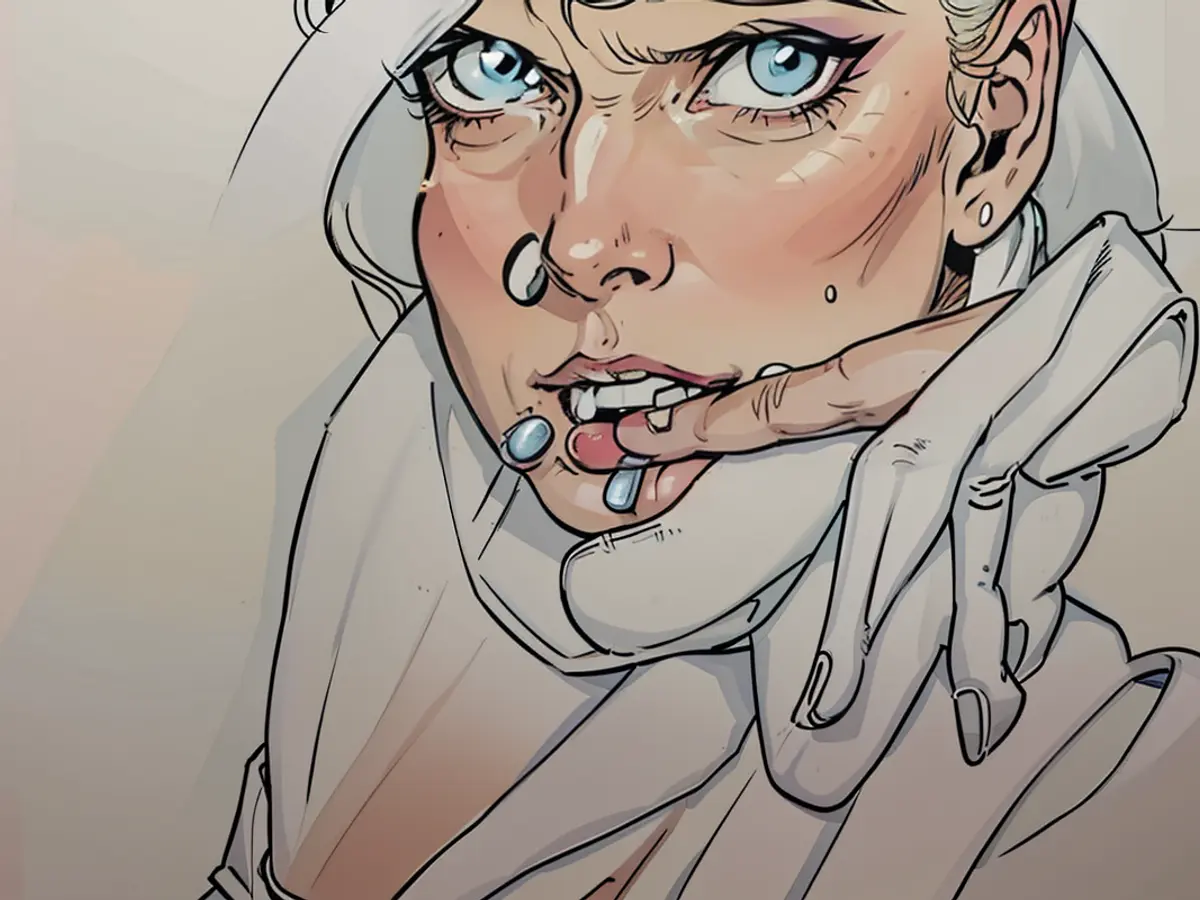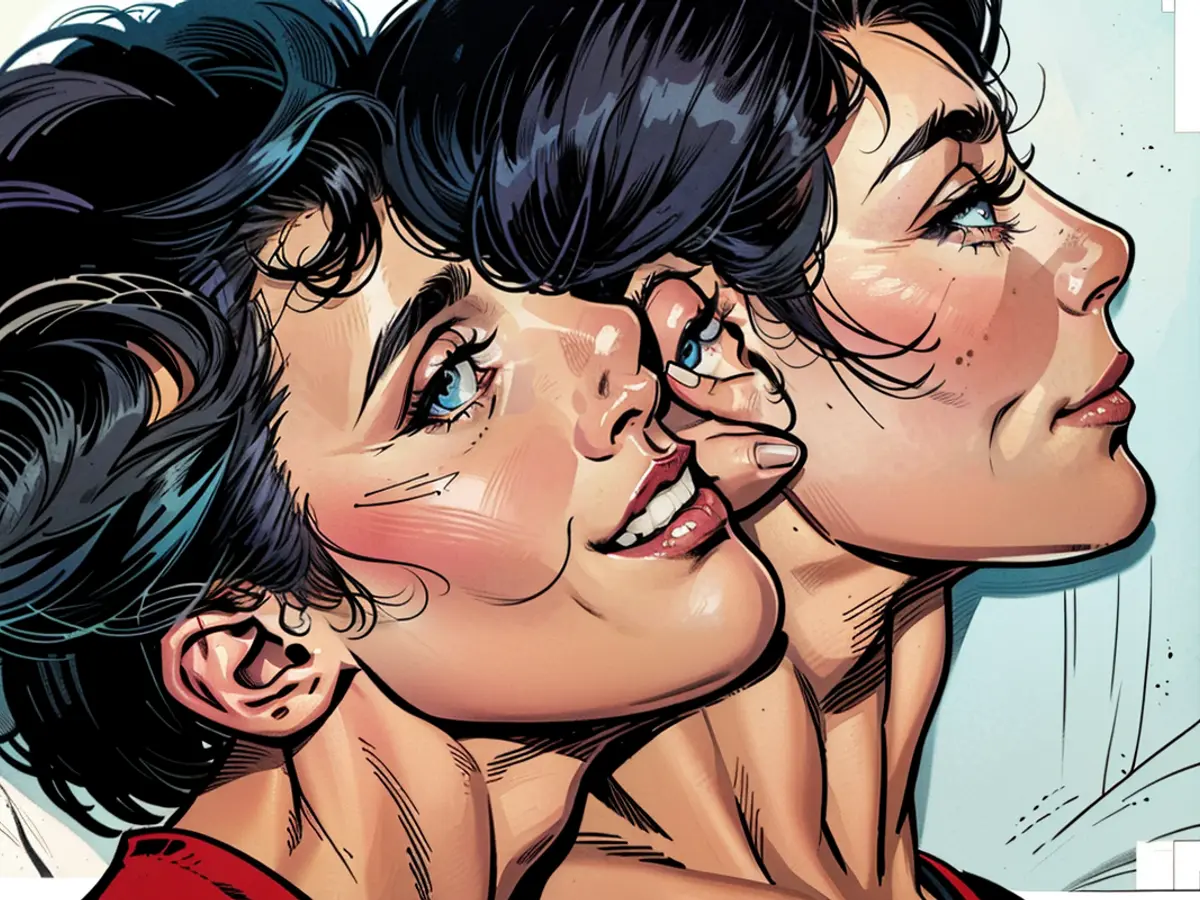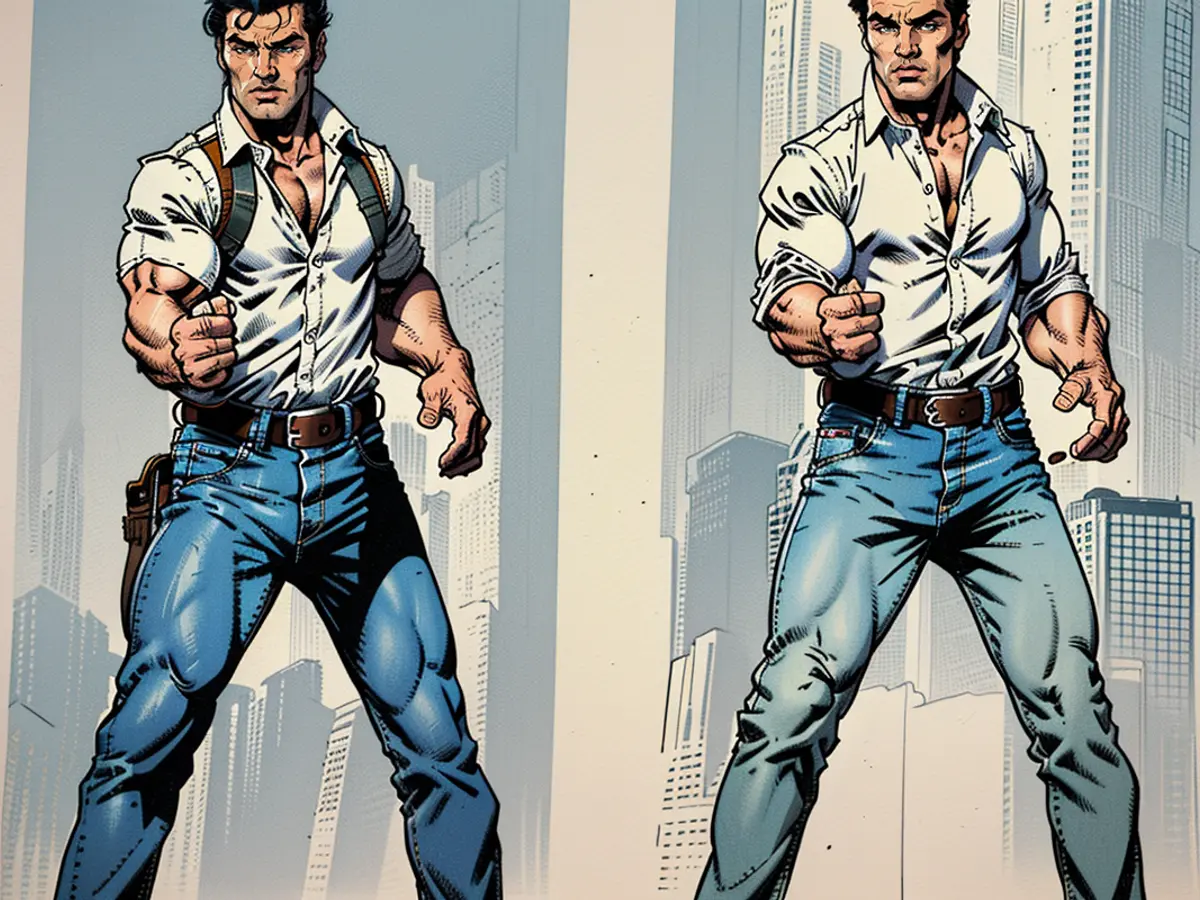The clearly ambiguous Andy Warhol
A Labyrinth of Blowjobs, male sexual organs and body parts is the theme of the Tuschel exhibition in Berlin. Andy Warhol's queerness is finally being written in stone at the New National Gallery, and celebrated. ntv.de visited the exhibition at the intersection of art and porn.
Marilyn portraits, Campbell's soup cans, Brillo boxes are clear symbols of Andy Warhol and hang - often copied - in apartments all over the world. The public does not get to see the coveted originals in the New National Gallery. Instead, young men in intimate poses, bare butts, various body and sexual parts are shown in Berlin. Not instagrammable at all. The acclaimed exhibition "Andy Warhol. Velvet Rage and Beauty" puts an end to the myth that Warhol was cool and mostly asexual.
"It's much better to love only in your imagination than in reality. Never doing anything is very exciting," says the artist in 1979 in the magazine Forum. His queerness was an open secret. However, his homoerotic male nude drawings, photographs, and explicit films have never been shown in galleries or museums before. Everything that is presented in the New National Gallery was intended for publication, emphasizes Klaus Biesenbach, curator and museum director, at the opening.
Longing and Heartache

For the first time, rarely exhibited paintings, drawings, photo and video works from many private lenders are gathered under one roof. Together, they form the portrait of a fluid, vulnerable man who yearns for ideal beauty and physical perfection. Warhol never came out publicly, says Co-Curator Lisa Botti to ntv.de in an interview. "There are no photos of him holding hands. But he had steady partners who lived with him. In interviews, he gave ambiguous answers and led journalists astray. He confided his heartache in his diaries."
She knew this, the art historian adds. Warhol died in 1987 during a gallbladder operation, and two years later, his diaries could be bought. Netflix revealed the private Warhol with the miniseries "The Andy Warhol Diaries" in 2022. Now, the queer Warhol entertains with corresponding art for the first time in a museum. There's never been this much flesh and sex in the New National Gallery before. Even bananas are loaded with double meanings in this context.
Berlin is the right place for Warhol

Should the public have seen this special exhibition? "Yes," says Lisa Botti. "The pictures we show fill in gaps and paint a more complex picture of Warhol. Why these works were not shown before - we will try to shed light on this through his biography and a timeline. Berlin 2024 is also the right place for our exhibition." Work series such as Sex Parts or Torso Paintings belong here naturally to Warhol. The exhibition is particularly relevant for this reason, as homosexuality is still persecuted in some parts of the world.
The balance act between art and porn is delicate. There is even a trigger warning. Adults are asked to engage in dialogue with their younger visitors about shame feelings or disturbing content. Warhol's films, which are shown in a cinema-like room, are only released for those 16 and older. The curators have deliberately contacted the youth welfare office and sought advice.
Longing, Desire and the Struggle draw a red thread through the exhibit. The exhibition begins with delicate sketches from the 50s, which are rather harmless. Born in 1928 as the youngest son of Slavic immigrants in Pittsburgh, he moves to New York at the age of 21 after completing his graphic studies. In the bustling Big Apple, Warhola, as he was born, ultimately becomes the extravagant Andy Warhol. As an illustrator, he earns well, can afford his own townhouse, and buys art. The advertising industry thrives on illustration during this time, and Warhol is highly sought after.

He wants more; he wants to be an artist. Warhol draws bodies around bodies with fine lines, sometimes covered in gold leaf. He learned to draw figures from Biesenbach. At the time, figuration was not a commercial hit, as abstract painting was popular then. These sketches show a very personal Warhol. Over the years, they become more explicit, depicting intimate scenes between men.
Why didn't the artist just photograph such scenes instead? The museum director explains. "The production or possession of such photos was risky back then and could have been punishable by law," he says. Homosexuality was illegal in many parts of the world, including the USA, where gays were branded as perverts and persecuted during the McCarthy era.
Elvis and the Drawn Guns

The emergence of the Polaroid camera at the end of the 50s enabled Warhol to produce images without becoming a "criminal" in the darkroom, according to Klaus Biesenbach. In the New National Gallery, these Polaroids unfold a gallery of many Warhols. With red lips and ever-changing wigs, he plays with identities. Beyond selfies, he also holds body parts like armpits, hips, feet, or lips. It seems that he continuously and meticulously collects the classical ideal of beauty.
Considering Warhol's art with knowledge of his identity changes the perspective, the curators agree. "The double Elvis from 1963 is usually hung in our collection as part of Pop Art," explains Lisa Botti. "It is shown alongside other Hollywood celebrities. In this exhibition, we suddenly focus on Elvis' hip swing, and we immediately think of all the fans who fainted when he did that." Additionally, the image was taken from a film still. The Western is called "Flaming Star," and the word "flaming," as Botti further explains, was used as a code word for gay in that era. The drawn guns of Elvis fuel the imagination even more.
Genitalia en masse

The art market loves Warhol for his oversized screen prints, which he produces in series. Those who put money on the table are portrayed in Warhol's style. The Pop Art made him a globally active icon. Many of his work series are commission works. For instance, the magnificent "Ladies and Gentlemen" welcome visitors in Berlin. Initially, Warhol did not want to accept this commission because the subject matter was too close to him. In the end, he created not 100 but 300 paintings. The magnificent "Ladies and Gentlemen" greet visitors in Berlin.
The glass hall of the New National Gallery was skillfully reconfigured with partitions, making Warhol barely visible from the outside. Inside the exhibition, there is a room filled with pictures that were created for a traveling show in 1977. Genitals and penises in masses, large, abstract, and colorful. Just like here, in Paris and California at the time, the curators note. While contemplating the unambiguous works, one wonders where the pictures have been hidden away.
Perhaps the AIDS epidemic also played a role, as a merciless homophobia set in with the crisis. Andy Warhol survived an assassination attempt by the radical feminist Valerie Solanas in 1968. Illness had accompanied him ever since, his body barely held together.

He had great fear of contracting HIV from his partner Jon Gould, who died of AIDS-related lung disease in 1984. "Andy Warhol is reported to have said at the opening of the Centre Pompidou in Paris in 1973, 'now I'm going to do what I want'," according to Lisa Botti. It didn't turn out that way. But he continued to create his works, which were considered immoral and illegal. And they are only shown in a museum 38 years after his death and finally reveal a more comprehensive understanding of Warhol.
"Andy Warhol. Velvet Rage and Beauty", until October 6, Neue Nationalgalerie, Potsdamer Straße 50, 10785 Berlin
- The "Andy Warhol. Velvet Rage and Beauty" exhibition in Berlin provides a unique perspective on Warhol's sexuality, showcasing his homoerotic male nude drawings and explicit films for the first time in a museum, highlighting Berlin's role as the perfect place for such an exhibition given the persecution of homosexuality in some parts of the world.
- The exhibition in Berlin also features Warhol's art that explores the themes of longing, desire, and struggle, offering a more complex portrait of the artist who yearned for ideal beauty and physical perfection, despite never coming out publicly and facing potential legal consequences for his homoerotic work due to societal attitudes towards homosexuality.
- Warhol's work, such as his "Sex Parts" or "Torso Paintings," fits naturally into this exhibition, illustrating different aspects of his sexuality and art, and the balance between art and porn in his work is delicate, as evident in his explicit Polaroid images of male bodies and his series of screen prints of celebrities like Elvis Presley, whose hip swing takes on new meaning in this context.






